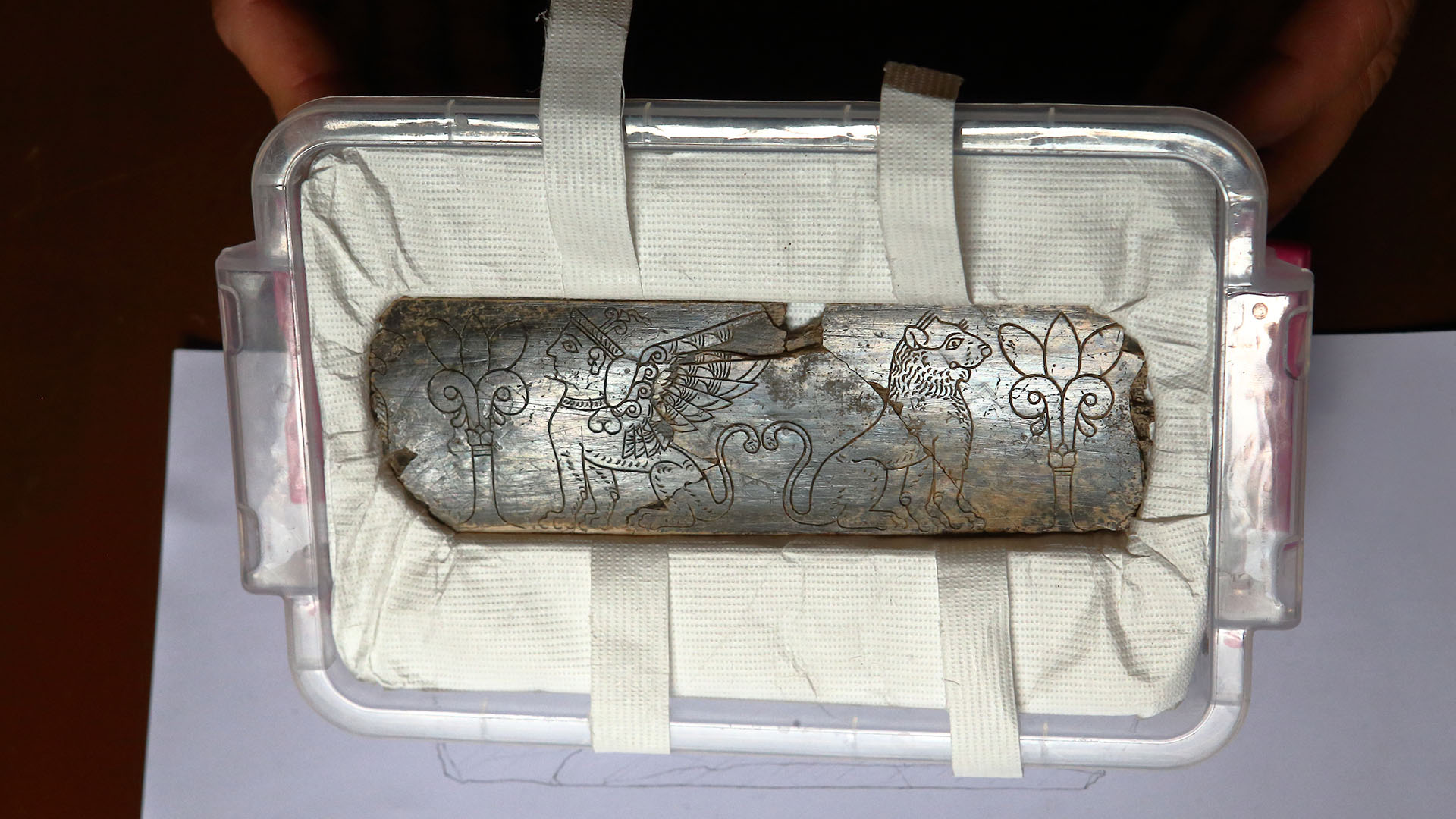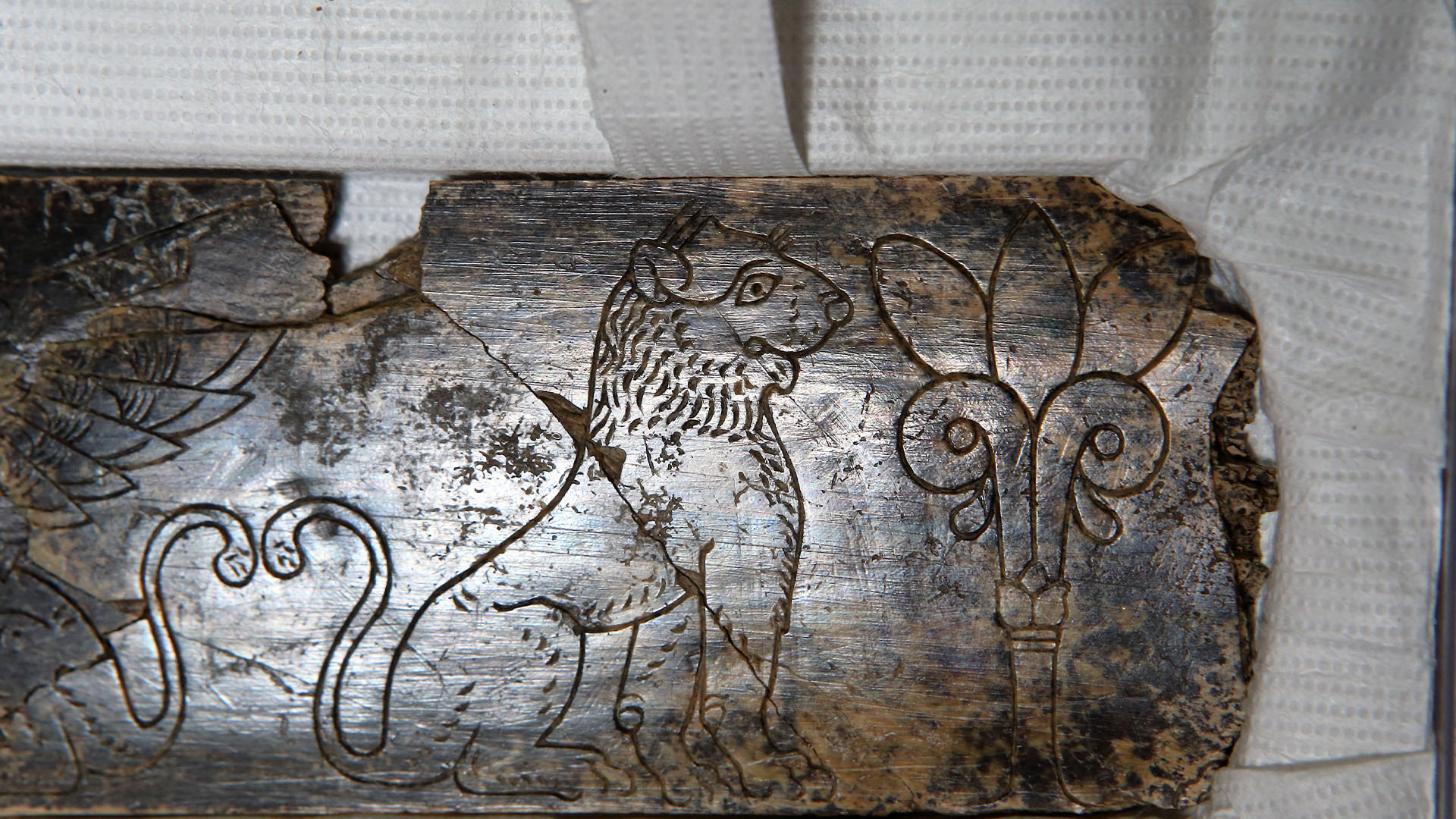
Archaeologists in Turkey have unearthed an ornately carved 2,800-year-old elephant tusk in what may have once been an Iron Age "center of power."
The ivory carving features a mythical sphinx — a human head on the body of a winged lion — as well as a depiction of a real lion and two tall plants that may represent the mythical "tree of life." While the artwork dates to the Iron Age, it was found in an archaeological layer over a much older city — the deserted Bronze Age Hittite capital of Hattusa.
According to Andreas Schachner, an archaeologist with the German Archaeological Institute who has led excavations at Hattusa since 2006, the artifact shows that the Iron Age settlement at the site was an important place, although it was established after the Hittites had abandoned the city in about 1200 B.C., during what's known as the Late Bronze Age collapse.

"It is possible to say that this place was no longer a small town but a more important place, perhaps a center of power," Schachner told the Turkish state-owned Anadolu Agency.
The artifact is about 12 inches (30 centimeters) long and 4 inches (10 cm) wide, and Schachner said it may have been part of a piece of furniture.
"It was probably added as an ornament to a wooden box or furniture made of wood in its own time," he told the agency. "The work is broken on the right and left sides, and the upper and lower sides are in our original form. Therefore, it is possible to guess that it was longer."
Iron Age settlement

Schachner explained that the object was unique among finds at the Iron Age settlement built at the abandoned Hattusa site, which is now beside the Turkish village of Boğazköy (also spelled Boğazkale), about 90 miles (145 kilometers) east of Ankara.
"For the first time, we are faced with a work decorated with such a dense, beautifully rendered scene," he said. "Extensive excavations have been carried out at the Iron Age levels at Boğazköy, but we had not come across such a detailed artifact before."
He added that the symbols carved into the fragment might reveal relationships between the settlement and other contemporaneous cultures.
After scientific studies of the ivory carving are complete, it will go on display at the Boğazköy Museum, Schachner said.







